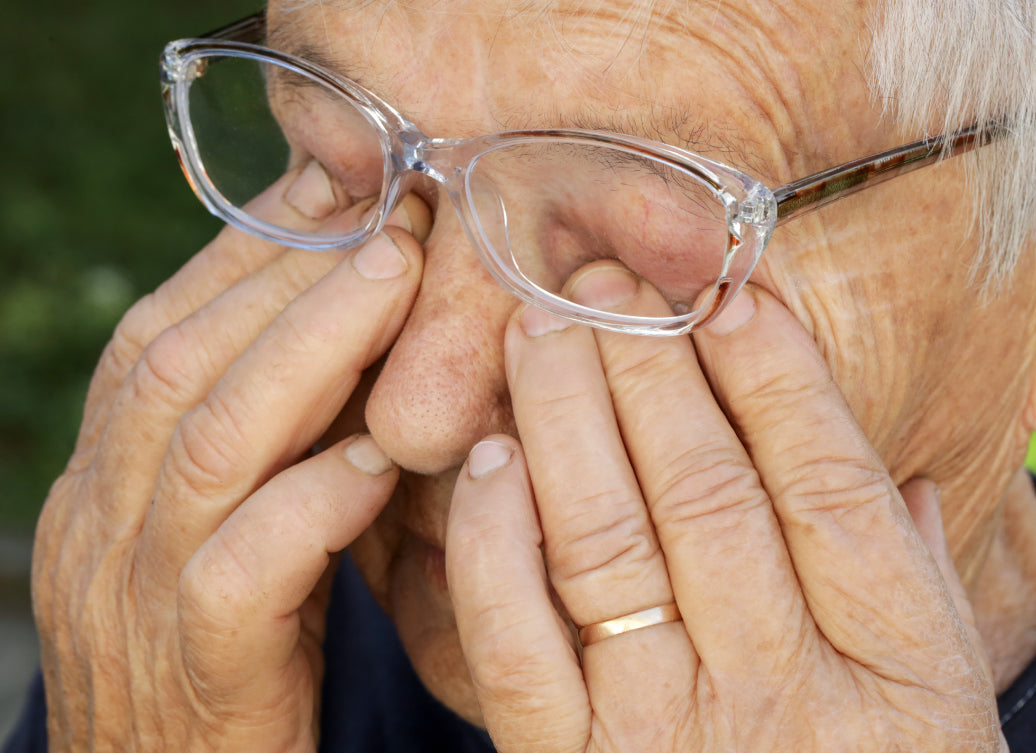If you’ve been given a diagnosis of blepharitis, you might be wondering why a condition that is usually considered a mild discomfort can hurt so much. In this blog we take a closer look at the painful problem of blepharitis.
What is blepharitis?
Blepharitis is a common, usually mild, irritation of the eyelids, around the eyelashes and along the inside edge of the eyelid. It isn’t contagious, and has an association with skin conditions like seborrheic dermatitis and acne rosacea. In more severe cases, blepharitis isn’t just uncomfortable or itchy, but can actually become painful, which is unsurprising given how sensitive the skin around the eye is.
What causes blepharitis?
Blepharitis doesn’t have one simple cause, so working out what’s going on can take a little detective work! Blepharitis is usually down to several factors which together increase your risk of a flare-up.
It’s a chronic condition, which means that some people are more prone to it than others, and are likely to have more than one episode. It isn’t contagious, but it can be triggered by a proliferation of bacteria, yeasts or mites that occur naturally on the skin.
Risk factors include having skin conditions such as dandruff, seborrheic dermatitis, or rosacea/acne rosacea; having diabetes; being in an older age group; having contact with irritants such as dust, chemicals, detergents; wearing contact lenses; wearing cosmetics; being in certain environments, such strong wind, low temperatures, and dry, air conditioned rooms.
The two types of blepharitis
Blepharitis is categorised into two separate variants, anterior and posterior.
- Anterior blepharitis is an irritation of the skin on the eyelid at the root of your eyelashes; it’s more likely to be caused by the overgrowth of bacteria, or an over-proliferation of mites.
- Posterior blepharitis affects the inner edge of the eyelid, and tends to occur when oil glands are blocked. People who suffer from rosacea and seborrheic dermatitis are more at risk of this kind of blepharitis.
Blepharitis Symptoms:
- Itchiness around the eye
- Crusts at the lash line
- A gritty feeling in the eye
- Swollen or inflamed eyelids
- Red or watery eyes
- Dry eyes
- Blocked ducts
- Burning or stinging sensations
- Sensitivity to light
As you can see, these symptoms can range from mild discomfort to debilitatingly painful, although the majority of cases are on the milder end of the scale. Symptoms such as swollen eyelids, scratchy feeling on the cornea, and burning sensations can all be quite distressing.
What are the complications of blepharitis?
Although most cases of blepharitis are just uncomfortable and easily resolved, some flares can tip over from irritated to really quite painful. These secondary complications may be what makes your blepharitis hurt so much.
Blepharitis Complications:
- Styes: infected eyelash follicle
- Chalazions: swollen or blocked meibomian gland
- Conjunctivitis: an infection of the membrane over the eyeball
- Keratitis: damage to the cornea, sometimes resulting in loss to your vision
How do you treat blepharitis?
Blepharitis responds very well to a daily management plan, which involves a three-step cleaning routine.
- Heat: place a hot compress or eye bag over your eyes for five minutes to warm the area
- Massage: massage very gently around the eyelashes to dislodge crusts and unblock ducts
- Cleaning: use a fresh, clean cotton bud dipped in well-diluted (scent- and soap-free) wash to clean the area around the eyelashes and eyelids
There’s strong evidence to suggest that 5% tea tree ointment can prevent mites from breeding; massage a small amount of Balmonds Tea Tree Balm into your eyelashes. You can use diluted Balmonds Natural Shampoo & Body Wash to clean the area.
As part of your daily cleansing routine, swap your foaming or scented make-up remover for an oil-based cleanser, like Balmonds Omega-Rich Cleansing Oil, which is much less likely to irritate your eyelids.
If the condition persists, doesn’t improve or gets worse after a week of this regime, consult a doctor or pharmacist; you may be prescribed antibiotic eye drops.
Recommended products:
Balmonds Skin Salvation
with hemp and beeswax
Balmonds Tea Tree Balm
balm with tea tree essential oil and beeswax
Balmonds Natural Shampoo & Body Wash
with calendula & chamomile
Balmonds Omega-Rich Cleansing Oil
with rosehip and calendula
